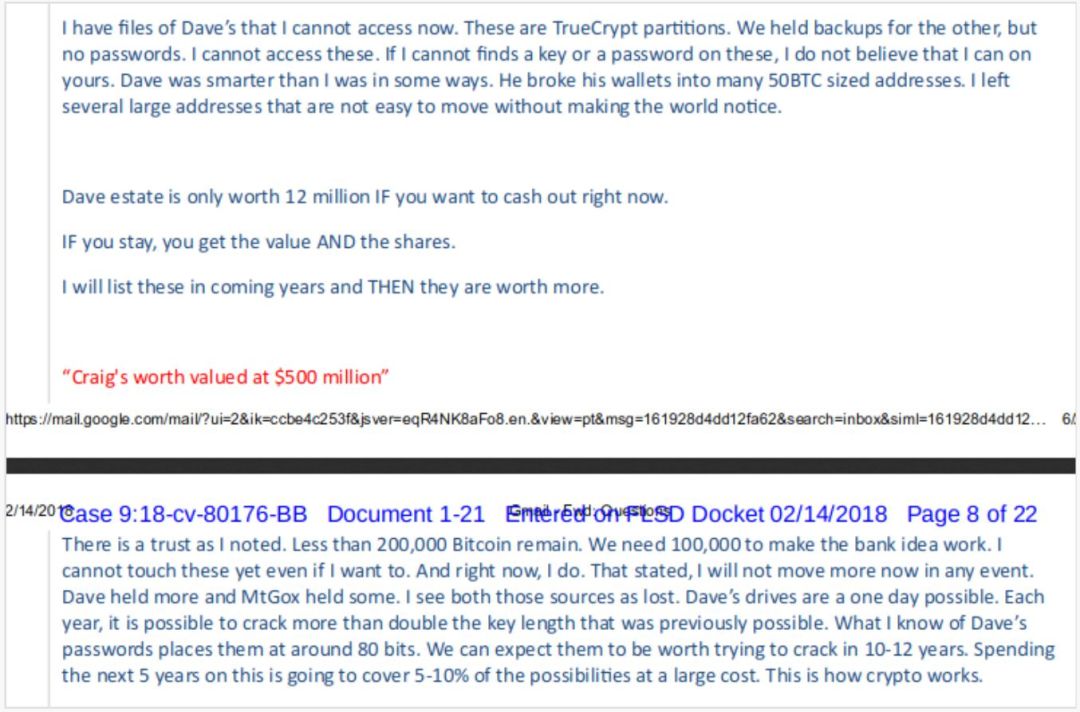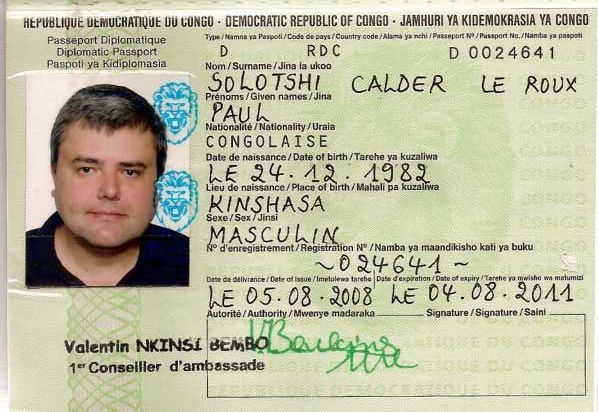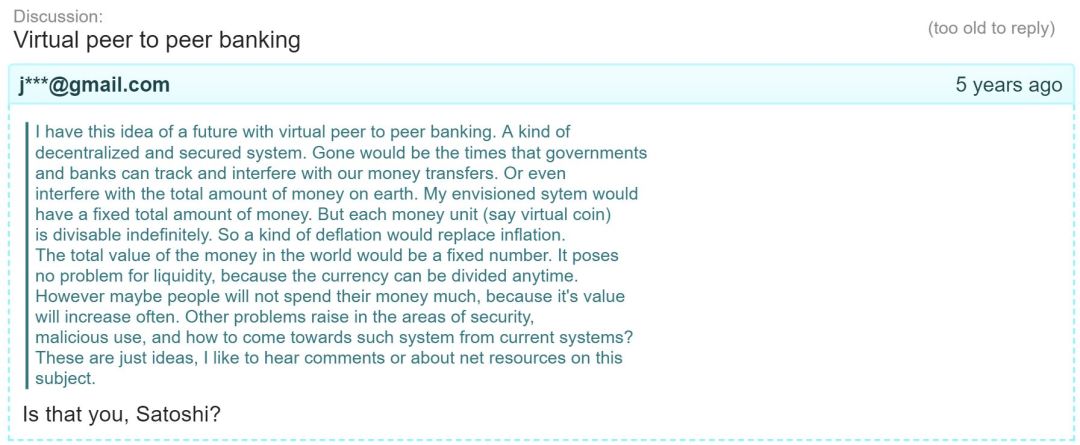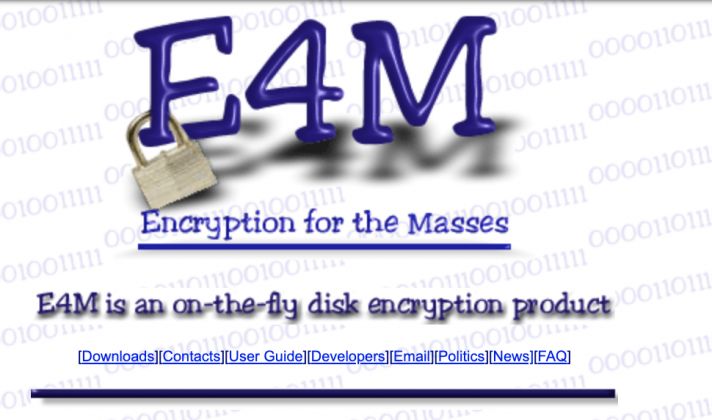The real Nakamoto is being held in jail? The bitcoin founder more likely than "Ao Ben Cong" appeared
Author: Jeremy Wall
Translation: Yue Wei
Source: blockchain outpost
Lead: Bitcoin founder Nakamoto's true identity may be the designer of the encryption software E4M and TrueCrypt Paul Solotshi.
At around 3 am on November 12, Grin developer David Burkett said in the Grin official telegram group that the team received an anonymous donation of 50 BTCs. Subsequently, the founder of Litecoin Li Qiwei appeared in the telegraph group, the mysterious character is Nakamoto Satoshi, the reason for the donation address trading account was established nine years ago.
David Burkett laughed and said that although the hope was donated by Nakamoto, there is no evidence to prove this. Then the financial blogger "Good Money" sent Weibo, and the Grin Development Fund once again received 50 BTC anonymous donations. The donors were Q-10 veterans in 2009-10.
Although this is an episode of looking for Nakamoto Satoshi, everyone has never given up on "Who is Nakamoto." There is new evidence that the true identity of Bitcoin founder Nakamoto may be the designer of the encryption software E4M and TrueCrypt, Paul Solotshi.
Paul Solotshi, 46, has a "criminal master" on the Internet and is also the designer of both encryption software programs for E4M and TrueCrypt (it is suspected that Nakamoto's 1 million bitcoin may exist in TrueCrypt software). . Paul Solotshi has published a declaration on the Internet, similar to Nakamoto's 1998 Bitcoin White Paper.
Not only that, but the word spelling and language style of the declaration is also like a white paper. Paul Solotshi likes to gamble, and Bitcoin's initial code includes a poker client. In addition, Paul Solotshi was jailed in 2012, which explains why the 1 million bitcoin in the Nakamoto account has never been moved.
Most importantly, the various documents presented in this article show that Paul Solotshi has some sort of relationship with Craig Wright, another computer scientist who claimed to be Nakamoto in 2016. Is this information piled up more like a 007 spy game?
Nakamoto Sakamoto, who frequently appears
The identity of Bitcoin’s mysterious founder, Nakamoto, has always been confusing and has become the most enduring mystery in the industry. Regarding the identity of Nakamoto, some people say that they are male, others say that they are women, and some even think that Nakamoto may not be alone, but these speculations are finally gone. The version of the guess is constantly changing, but the mystery is still a mystery.
During this period, many of Nakamoto's speculations and identity candidates continued to enter the public's field of vision, including Craig Wright, who publicly declared himself to be Nakamoto. However, his bold move made him a member of the "False Satoshi" group.
Wright's behavior sparked a lot of controversy, followed by endless lawsuits and trials. The Kleiman v. Wright case was even more entangled. However, it was very strange that during the investigation of the case, a piece of extravagance appeared. New evidence (this page of evidence is very similar to Wikipedia and should be unmodified). The evidence points to another person. This person is not Wright, it is our main character today, Satoshi.
Who is the new identity of Nakamoto?
The newly discovered Nakamoto Satoshi, whose full name is Paul Solotshi Calder Le Roux, is 46 years old. He was a leader of a large company alliance organization specializing in drug and arms smuggling, and also served as the US Drug Enforcement Agency. The informant is a natural programming expert.
If you search for his information on Wikipedia, you can see his rich life history. Le Roux has worked in gold smuggling, precious metal mining, money laundering, logging, assassination and encryption software development.
In addition, about Le Roux, Wikipedia has one more news:
Le Roux is currently being arrested by US police on charges of plotting assassinations, killing six people.
Some readers may have read the "Master of Crime" serialized on the Atavist platform, which is no stranger to Le Roux's story.
The high-level summary of the serial cover is like this:
He is a talented computer engineer and a sinister criminal leader, but he has received special attention from the US government.
As mentioned above, Le Roux is a very good programmer, except for his criminal status. In 1999, Le Roux led the design of the free disk encryption software E4M for Windows. In addition, it was possible to participate in the development of the E4M-based open source TrueCrypt disk encryption technology.
So the question is: how can such a geek–a person with a deep criminal background and excellent programming contributions be associated with the Craig Wright trial? How could it become a new candidate for Nakamoto?
Let's take a look at the case evidence.
The lawsuit unexpectedly points to a new clue
Shortly after publicly claiming to be Nakamoto, Craig Wright was sued by the Kleiman family in a Florida court, alleging that Wright had stolen $11 billion worth of bitcoin from the late Dave Kleiman. Dave Kleiman is said to be a computer forensics expert. He was also suspected to be the real body of Nakamoto. They used to be partners until Kleiman died in 2013.
In this lawsuit, there is a lot of ridiculous speculation in the evidence submitted by the defendant Craig Wright, in addition to misleading information, fraudulent documents and false content.
The incredible speculation is concentrated in Wright's 187 document, Craig Wright's Protection Order Proposal.
According to the document, evidence supporting Craig Wright's Nakamoto identity and $11 billion in bitcoin ownership contained a number of sensitive information, one of which was about Craige Wright's connection with criminal organizations and involvement in the arrests.
The content of the document has been modified by Wright because it is feared that the prisoner will be retaliated by knowing his or her hard work.
Unfortunately, the person who modified the file ignored a footnote below the file. It is precisely this neglected detail that points to the criminal organization leader Paul Le Roux, which is the protagonist of this article.

Image source: 187 ignored footnotes in the document
The incomplete link shown in the footnote above points to an article in the British "Daily Mail" article, which describes Le Roux:
A real life can compete with Bond's film villains, master the organization of drugs and arms empire across four continents, and turned into a super-wireman of the US police.
In addition, there is a link to the unmodified footnote that points to Le Roux's Wikipedia information. According to the information, Craig Wright's fear object is most likely Le Roux.
Big reasoning between Paul Le Roux, Nakamoto Satoshi and Craig Wright
With the disclosure of the 187 document, there are many indications that Paul Le Roux might be Nakamoto Sakamoto, and that Craig Wright still holds Paul Le Roux's one million bitcoin encrypted hard drive.
But what is the relationship between Craig Wright, Dave Kleiman and Paul Le Roux in this incident?
From the 187 document and Le Roux's unmodified evidence, Le Roux is the anonymous person mentioned in the Wright document.
Combined with the document information and some reasoning, it can be concluded that Wright might have worked under Le Roux and told the police in 2012 that Le Roux was jailed.
Following this hypothetical storyline, according to an anonymous friend of Reddit Post, Wright and his old friend and business partner Dave Kleiman successfully got Le Roux's encrypted hard drive with Le Roux's 1 million Bitcoin.
But these bitcoins are locked in Le Roux's TrueCrypt software encryption volume (this password encryption software was also developed by Le Roux). Wright spent a few years trying to break the password and failed. This also explains why Wright has never been able to produce actual evidence that he is Nakamoto.
Craig Wright's friend Calvin Ayre then helped build several computer warehouses, trying to unlock the encrypted hard drive code, disguising the entire warehouse area as a cryptocurrency mine, and using mining practices to cover it.
Therefore, this speculation seems dazzling but the plot is relatively reasonable. Craig Wright publicly claimed that he was "Zhong Ben Cong" whose purpose was to crack the password, get 1 million bitcoin, and then legally realize it.

The picture above is from a one-page document in the Kleiman v Wright lawsuit. Wright stated in the file that he had Kleiman's Bitcoin TrueCrypt storage package, which could be unlocked in 5 to 10 years. In this case, we can conclude that the TrueCrypt file in Wright's hand actually belongs to Le Roux, not Kleiman.
The amount of information mentioned above is really large, and you may still have many doubts and problems. This is not surprising, because it is a very complicated inference. But if you look closely, Paul Le Roux and Nakamoto have a lot of similarities.
What are the similarities between Paul Le Roux and Nakamoto?
In addition to the Paul Le Roux information provided by Craig Wright, there are many different coincidences that seem to prove that the criminal organization leader Le Roux is Nakamoto.
1. The word "Solotshi" in the pseudonym Paul Le Roux is very close to Satoshi Sakamoto
In Le Roux's multiple passports, he used the term "Solotshi" as his name, which is very similar to "Satoshi" in Satoshi Nakamoto.

2. Paul Le Roux, like Nakamoto Satoshi, is a programmer and familiar with C++.
Before Paul Le Roux was engaged in criminal activities, he was a very good computer programmer who was almost obsessed with cryptography and privacy protection research, much like Satoshi Nakamoto.
As mentioned earlier, in 1997 he began to study the Encryption for the Masses, which encrypts the entire hard disk and reasonably denies access to the encrypted volume.
In addition, Le Roux has published a declaration with a concept similar to that of Nakamoto's white paper. The following is a description of Wikipedia:
In the political section of the E4M website, Le Roux issued a declaration stating that the government is increasingly relying on the power of electronic data collection. A typical example is the United States-British joint code "Echelon", which includes Canada and Australia. After New Zealand and New Zealand, it eventually evolved into a "five-eye alliance." In this regard, Le Roux said that citizen privacy will be greatly challenged, and encryption is the only way to protect civil liberties.
At the end of the declaration, he said:
Entering the information age and post-information era, powerful encryption technology is an effective mechanism to combat personal invasion, protect your individual rights, and protect your personal freedom.

3.Le Roux may have also developed TrueCrypt encryption software, and Nakamoto’s 1 million bitcoin is now in the software.
It is said that Nakamoto's 1 million bitcoin is safely stored in TrueCrypt's encrypted volume. TrueCrypt is an E4M-based development software, and Le Roux is likely to be a member of the anonymous developer team.
This guess is reasonable, because according to Le Roux's former colleagues, Le Roux has studied the software, but they have no reliable evidence, so it is still unsolved.
In short, if someone can store up to 100 million bitcoins in TrueCrypt's cold wallet, it's hard to believe that he has nothing to do with participating in the development of hard disk encryption software.
4. The disappearance of Nakamoto's whereabouts coincides with Le Roux's transition time.
At the beginning of 2011, Nakamoto was suddenly disappeared. At the same time, Le Roux bid farewell to the software development field and switched to the boss of a large pharmaceutical company alliance. However, RX Limited was soon hit by the US government and the US Drug Enforcement Administration for illegally engaging in international pharmaceutical business.
Wikipedia describes this experience as follows:
Probably in 2011, Le Roux suddenly evaporated from the crowd, and for a long time even his employees knew nothing about his whereabouts. As the pace of investigations by US government agencies accelerated, Le Roux had to temporarily take refuge in Rio de Janeiro and later planned to settle for a long time.
The sudden disappearance and crouching of Le Roux basically coincided with the time when Nakamoto was disappearing on the Internet. This is another very similar point between the two.
5. Web posts circulated in 2002, suspected by Le Roux
Just in 2002, when bitcoin was born seven years ago, there was a post on the forum, which sounded very much like the concept of Bitcoin.

For a long time, people speculated that this post may have been written by Nakamoto Satoshi seven years ago when Bitcoin was born. What is intriguing is that it was reported that the IP address of the post was from the Netherlands, and Le Roux was just in the Netherlands.
In addition to the above points, Le Roux and Nakamoto have many other similarities:
- Both of them are very vigilant about the government — Le Roux's E4M Declaration and Nakamoto's Bitcoin White Paper show this.
- Both are interested in online gambling — we know that Le Roux has been involved in online gambling, and the initial bitcoin encoding just happens to include a poker client.
- Both understand that to solve the problems in traditional payment systems, a new digital payment system needs to be created. Le Roux's goal is to improve the more clumsy payment systems used in its online prescription drug market, and Nakamoto has also elaborated on the new concept of payment systems in Bitcoin White Paper.
- Similar spelling and language writing styles exist in both public documents, such as analyze, colour, defense, bloody, hard, which are highly similar.
- Le Roux was at least a multi-millionaire at the time, so he did not cash in the bitcoin when the price of bitcoin rose.
Paul Solotshi Calder Le Roux Is it Nakamoto?
Although all the evidence indicates that Le Roux is highly likely to be Nakamoto, there are still many questions. For example, when Nakamoto improved Bitcoin in 2009, Le Roux's status as the head of the big business alliance was established and drug smuggling and arms transportation began. If the two are the same person, how can they manage all these businesses while also opening a forum to give the novice an answer to the bitcoin?
Therefore, some people think that Craig Wright claims that the connection with Le Roux is completely fabricated, in order to tell the world that he is related to the origin of Bitcoin.
However, Wright has no good name in the encryption technology industry, and no one else believes that Calvin Ayre believes him.
Therefore, Wright's statement must be strictly verified by facts and must be treated with caution.
If the suspicious connection between Craig Wright and Le Roux is confirmed, Solotshi will eventually become Nakamoto Satoshi, which is the most unbelievable news in history. Director Quentin will not miss this excellent. Movie material.
Original link: https://www.investinblockchain.com/new-evidence-suggests-satoshi-nakamoto-is-paul-solotshi-the-creator-of-encryption-software-e4m-and-truecrypt/
We will continue to update Blocking; if you have any questions or suggestions, please contact us!
Was this article helpful?
93 out of 132 found this helpful
Related articles
- Central Bank: Announcement on the fraudulent use of the People's Bank to issue or promote legal digital currency
- Tucao: What are the three major card chain tours?
- People's Daily Online: Behind the strategic positioning of the blockchain country, Chinese companies are racing against future card positions
- IBM reports: the central bank may launch consumer-use central bank digital currency within five years
- QKL123 Quote Analysis | Short-term disk is constantly being tested; how will Bitcoin evolve in the future? (1113)
- The Evolution of Ethereum Tokens: The Rise of Stabilizing Coins and ERC-721
- Depth | Metrics and assessment methods for encrypted assets





